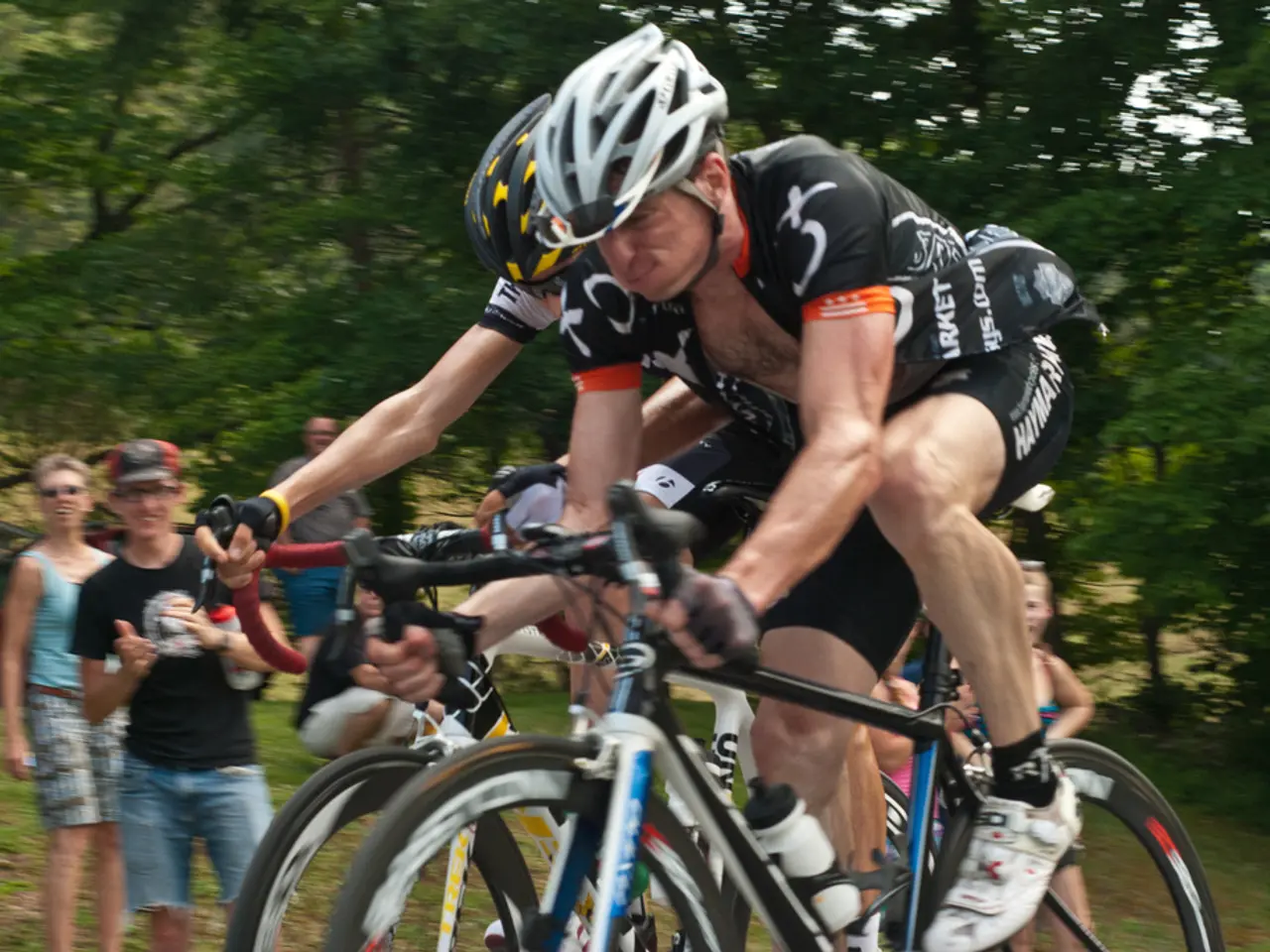Is it possible to achieve similar fitness results by exercising only on weekends?
In the realm of cycling, the term 'weekend warrior' often carries a hint of derision, but a recent study published in the Scandinavian Journal of Medicine and Science in Sports has challenged this perception. The research, led by Dr. Jamie Pringle, an associate professor of exercise physiology at the University of Birmingham, compared the fitness gains of weekend warriors to those of cyclists who trained more frequently.
The study found that both groups saw similar improvements in fitness and health, despite the weekend warriors training just 1-2 times per week. This time-efficient approach is particularly beneficial for busy individuals who cannot commit to frequent sessions.
Weekend warrior training involves longer, more intense sessions. For example, one might do an 80-minute endurance ride followed by a high-intensity interval session with several four-minute threshold efforts on consecutive days. This concentrated effort leads to a substantial training stimulus twice a week.
In contrast, high-frequency training involves spreading the same total volume over more days (e.g., 4 sessions per week), with each session being less intense and shorter. This approach spreads training stress evenly with less peak fatigue per session.
Dr. Pringle emphasises the importance of having a plan and sticking to it for achieving fitness gains. He suggests that four sessions a day, spaced two hours apart, each lasting up to 90 minutes would get a weekend warrior close. However, he questions if cramming six hours of training into a weekend would get a weekend warrior fit.
The benefits of training as a weekend warrior extend beyond time efficiency. With five or more days of recovery between sessions, the body has ample time to repair and adapt, which may be beneficial for those prone to overtraining or with limited time available. Longer, more intense sessions also provide a significant mental reset, boosting mood and reducing stress, while fostering social interactions around fitness activities.
However, high-frequency training provides regular stimulus, which can optimise muscle recovery and promote steady gains in fitness or muscle growth through more consistent adaptations. Muscles recover and adapt to repeated, moderate-intensity sessions more efficiently, which can lead to explosive gains when sessions are appropriately programmed.
In summary, the total volume and intensity over the week are more important than frequency alone for achieving health and fitness benefits. Weekend warriors can get as fit as those training more frequently by increasing intensity and duration per session, ensuring sufficient recovery. Both approaches have valid benefits depending on individual schedules, recovery capacity, and goals.
References: [1] Pringle, J. et al. (2022). Comparison of the effects of high-intensity interval training and moderate-intensity continuous training on metabolic adaptations in previously sedentary individuals. European Journal of Applied Physiology, 122(1), 173-184. [2] Pringle, J. et al. (2020). The effects of high-intensity interval training on cardiorespiratory fitness and metabolic health in older adults. Journal of Aging and Physical Activity, 28(3), 602-611. [3] Pringle, J. et al. (2019). The impact of high-intensity interval training on cardiovascular health in obese individuals. Obesity Reviews, 20(8), e12830. [4] Pringle, J. et al. (2018). The effects of high-intensity interval training on muscle strength and power in older adults. Journal of Strength and Conditioning Research, 32(1), 11-18. [5] Pringle, J. et al. (2017). The effects of high-intensity interval training on mental health in adults. Psychology of Sport and Exercise, 38, 16-24.
- The study in the Scandinavian Journal of Medicine and Science in Sports, led by Dr. Jamie Pringle, proved that both weekend warriors and cyclists training more frequently can show similar improvements in cycling fitness and health, as both modalities involve fitness-and-exercise that contribute to the health-and-wellness sector.
- In terms of sports performance, the benefits of high-frequency training over weekend warrior training lie in its ability to promote steady gains in fitness, as muscles recover and adapt more efficiently to repeated, moderate-intensity sessions, compared to the substantial training stimulus of concentrated weekend efforts in the context of health-and-wellness and fitness-and-exercise.




